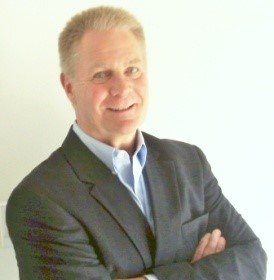Phil Faris: I can relate to that because I played sports for many years. Then, after I turned 50, I started having injuries, and I couldn’t take working out for granted. I had to learn different approaches and different ways to get the same kind of results. Before that, I just took it for granted. I figured my body would always take care of itself. But, when you start getting injuries, and other factors weigh in, then areas like form and intensity and frequency start making a big difference. I could no longer abuse my body, so that spurred my learning process of fitness after 50. Let me back up just a second. I’ve been to your facility, and it’s unique. You’ve got all types of people and groups working out including Baby Boomers. What attracted you to start working with boomers, because not every trainer likes to work with them?
Mark Palmieri: I just believe when I take on anybody, it’s a very individualized scenario for me. I could certainly tell you that the people I’m working with now, I just became enamored with their personalities and the mental connection. The boomers that I work with, I would love to go out and have a tall adult beverage with them any day of the week.
I guess, let me go back a step because it wasn’t always like that. One of the clients that I work with specifically was peer-pressured by his son to come in and work out. It was originally going to be a one-time thing. Then he was going to go back to his house and replicate the workout I showed him, and then come back whenever he needed assistance. That changed very rapidly after the first workout, or that assessment I was talking about because we were talking through a bunch of different things and we’d established that he had a very specific goal. He wanted to feel healthier. That’s a big statement for me. As a competitive person and somebody who cares about people, when I hear something like that, I’m throwing everything I’ve got at you.
I don’t mean that in an intimidating way, I mean it in a toolbox way. I wanted to provide this specific client with as many options and tools as I possibly could to get him feeling healthier. In this specific instance, we’re talking knee pain. We’re talking lower back pain, and we’re talking cervical neck pain. I hear the pain, and even with you, Phil. When you say that you’re in pain, my immediate reaction is, maybe it’s a little bit of white knight syndrome, but I want to get you out of that as soon as possible, and I am not a physical therapist; Trainers walk that fine line every day. If there’s pain that I do not understand, or can’t help you with, I will refer you in a heartbeat, because of your safety’s way more important to me than my ego. I will always assure you that.
Man, it was brilliant to watch his progress. I’ll take pictures or short videos at the client’s discretion. I’ll show them their progress and when I showed him where he started in his squat pattern, and how initially awkward it may have felt, to where he is now with zero knee pain and zero back pain and zero neck pain. It was amazing. If that were the only thing I did for my client, I would’ve felt very accomplished with it. But, we train three days a week now, and I am excited for every session that we have. We’re at it bright and early in the morning, and it starts my day. My boomers are early and committed clients. There’s a lot of life there.
They’re my motivators. A couple have even become involved in my business now, on a few occasions. One of my clients also does the accounting for me. One of my favorite clients. That’s a long answer. I apologize for it. The stories. I’m in for the story. I’m in for the long haul.
Phil Faris: I think that demonstrates the connection and commitment you have with your clients. It’s not just, come in, get the workout, done, and get out. It’s about the person. I’ve seen that in how you approach your clients, and that’s important. There are a lot of boomers out there that haven’t worked with a personal trainer before. In fact, they may be a little intimidated thinking about working with a trainer. What are some of the biggest misconceptions they may have about working with one?
Mark Palmieri: First, I don’t blame anybody who experiences a little bit of intimidation, especially giving up some physical ability. Right? If you’re going to seek out the advice, or potentially work with a trainer, that’s a big, vulnerable position to be in. I don’t blame anybody for that. I think it demands a very specific approach, and maybe a little pre-game knowledge before you start doing that.
One of the misconceptions is that it’s going to be hard; that’s probably the biggest misconception. This is going to be specific to the trainer that you’re working with. I would encourage anybody who’s going to find a trainer, whether it’s me or anybody else, to have a conversation with them and get the expectations out there. Be okay with admitting where there are some pain spots and that kind of stuff. The first misconception is that it’s going be hard. It shouldn’t be. The first time you go in and see somebody, it shouldn’t be hard at all. In fact, it should be easy. It should be a little bit of conversation, and a little bit of movement assessment. Then, you should walk out of there feeling good. That would be the first thing I would say: you should be excited.

